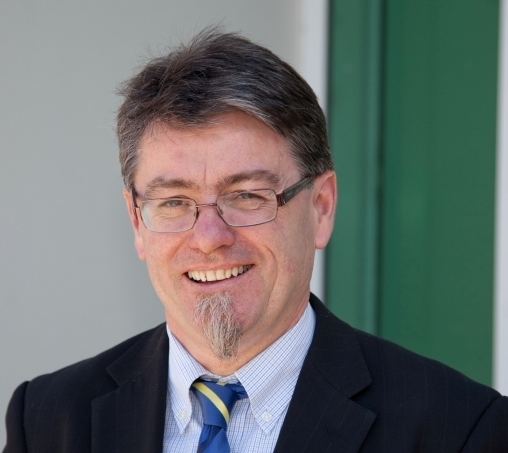Title Professor | Role Professor Name Gordon Wallace | |
 | ||
Full Name Gordon George Wallace Born 9 June 1958 (age 67) ( 1958-06-09 ) | ||
Next generation medical bionics professor gordon wallace at tedxuwollongong
Gordon Wallace, AO, FAA, FTSE, FIOP, FRACI (born 9 June 1958 in Belfast, Northern Ireland) is a leading scientist in the field of electromaterials. His students and collaborators have pioneered the use of nanotechnology in conjunction with organic conductors to create new materials for energy conversion and storage as well as medical bionics. He has developed new approaches to fabrication that allow material properties discovered in the nano world to be translated into micro structures and macro scopic devices.
Contents
- Next generation medical bionics professor gordon wallace at tedxuwollongong
- Prof gordon wallace bionic graphene
- Early years
- Research years
- Awards and Distinctions
- Select Publications
- References
Professor Wallace’s research interests include the discovery of new materials and the use of these in energy and biomedical devices.
Executive Research Director at the ARC Centre of Excellence for Electromaterials Science and Director of the Intelligent Polymer Research Institute and the Australian National Fabrication Facility (Materials Node) both headquartered at the University of Wollongong.
Prof gordon wallace bionic graphene
Early years
Gordon Wallace was born in the city of Belfast in Ireland where he attended primary school. His boyhood ambition was to become a professional soccer player. However, in 1972 his family emigrated to Australia and settled in Geelong where he completed his high school education. He became interested in Science while at Oberon High School.
He went to Deakin University in Geelong and played soccer for the local Geelong football club. Gordon Wallace played soccer for the All Australian University team winning a University Blue for Sport at Deakin.
Gordon Wallace graduated with a BSc Honours (Chemistry and Physics) in 1979 and then received a PhD in 1983. He returned to his home country, Ireland, where he lectured for two years at University College in Cork. In 1985 he decided to return to Australia to take up an appointment at the University of Wollongong. In 1990, at the age of 32, he was appointed a Professor.
He was awarded an Australian Research Council QEII Fellowship in 1991, an ARC Senior Research Fellowship in 1995, an ARC Professorial Fellowship in 2002 and a Federation Fellowship in 2006. He was awarded a DSc from Deakin University in 2000.
Research years
Gordon Wallace’s first major contribution to science was to challenge the conventional wisdom that instability in polymer materials should always be eliminated. He asserted that this instability could, if understood, be directed and controlled, allowing the creation of “intelligent” polymers – materials that sense and respond to stimuli.
In 1990, Professor Wallace established the world’s first intelligent polymer research laboratory in NSW. His work has more recently been focused on exploring the development and use of such materials in biomolecular technologies – he has led a number of initiatives in developing the field of organic bionics.
He has developed collaborative research relationships with the inventor of the Cochlear Bionic Ear, Professor Graeme Clark as well as Professor Stephen O'Leary, Professor Peter Choong, and Professor Mark Cook which have led to significant developments in the field of new materials for medical bionics. He has now established a significant national clinic network with others including Professor Chris Baker, Professor Michael Coote, Professor Toby Coates, Professor Gerard Sutton, Professor Stuart MacKay, Professor Morteza Mori Aghmesheh, Dr Payal Mukherjee and Professor Xu-Feng Huang.
Professor Wallace has played a significant role in helping to lift the international research reputation of the University of Wollongong. He has hosted more than twenty international symposia in Wollongong, the largest being the International Conference on Synthetic Metals that attracted 1,000 delegates in 2004. He is a chair of the upcoming International Conference on Nanoscience and Nanotechnology 2018 (ICONN).
He has published more than 850 refereed papers and monographs on inherently conducting polymers for intelligent material systems, as well as the book Organic Bionics. He has an h index of 79 and has amassed in excess of 30,000 citations. He has supervised the work of almost 100 PhD students. In addition to being awarded a number of research prizes, Gordon Wallace was elected a Fellow of the Australian Academy of Technological Sciences and Engineering in 2003 and of the Australian Academy of Science in 2007.
He was appointed as an Officer of the Order of Australia and Wollongong’s Australia Day Ambassador in 2017.
He received the Inaugural Polymer Science and Technology award from the Royal Australian Chemical Institute (RACI) in 1992. He was awarded an ETS Walton Fellowship by Science Foundation Ireland in 2003. . In 2009 he was awarded a lifetime achievement award by SPIE.
He was appointed to the Prime Ministers Knowledge Nation 100 in 2015. He received the Eureka Prize for Leadership in Science and Innovation in 2016.
He was elected as a Fellow of the Australian Academy of Technological Sciences and Engineering in 2003. He received the RACI Stokes Medal for research in Electrochemistry in 2004 and was elected as a Fellow of the Institute of Physics (UK). In 2007 he was elected as a Fellow of the Australian Academy of Science
In September 2008, Professor Wallace’s team moved to research facilities at the University of Wollongong’s new Innovation Campus based at North Wollongong.
He was instrumental in developing the vision and securing the funding for the Processing and Device Fabrication Facility opened in 2012.
Awards and Distinctions
The significance of Professor Wallace’s contributions to electrochemistry and polymer science has been recognised with a number of awards. A selection of these awards and distinctions are listed here:
